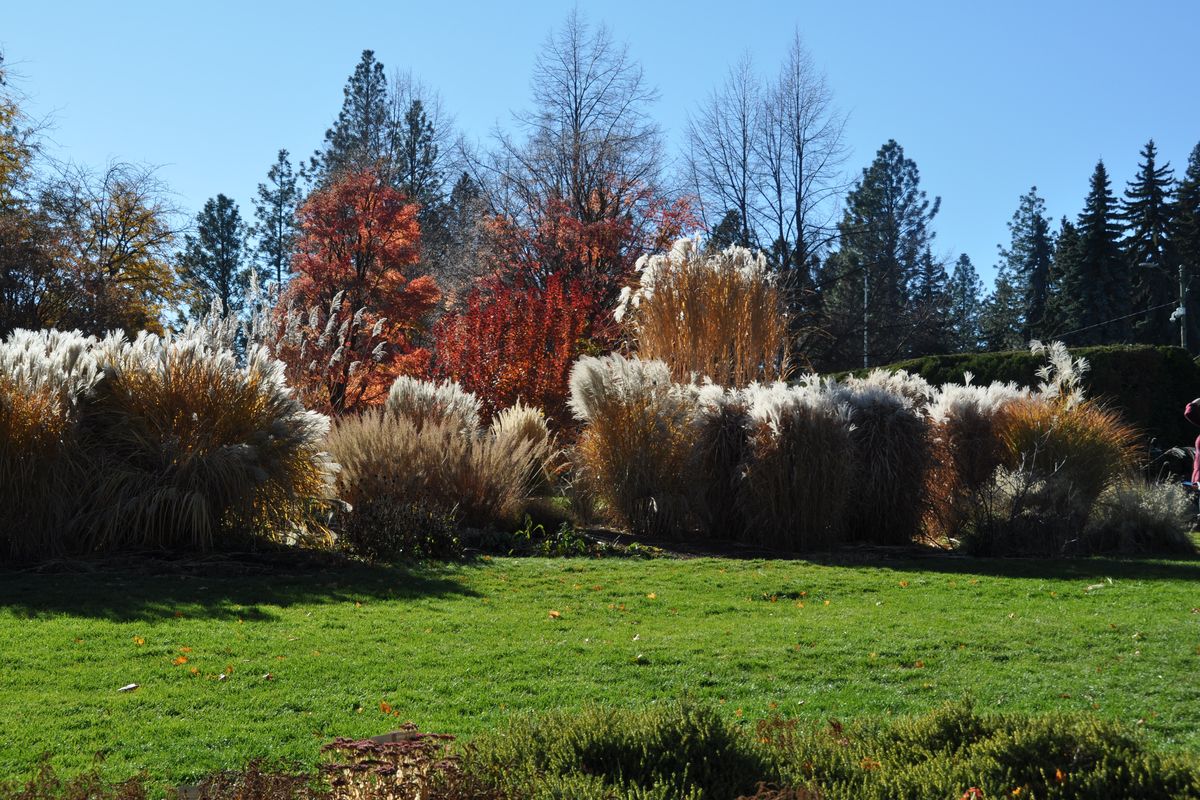Gardening: Ornamental grasses provide light, color and movement in gardens

Last week, I talked about smaller trees with good fall color. There is another group of plants that have been rivaling the trees for color, the ornamental grasses.
The ornamental grass display gardens in the Ferris Perennial Garden at Manito Park are at their peak of subtle color and spectacular plumage. If you can, make time to visit the garden while they are at their best.
Ornamental grasses come in many sizes from 6-inch mounds of blue fescues to 10-foot-tall clumps of giant Chinese silver grass and every size in between. Through the growing season, grasses add a wispy texture to garden beds and a variety of shades of green, yellow, tan and even purple to the garden that are hard to mimic in other plants. In my beach-themed firepit area, I have a sedge in a rust color that mimics the sea grasses you’d find on a Puget Sound beach.
Through the growing season, ornamental grasses are a constantly changing element. Since many are cut to the ground each spring, they will start off as short clumps that through the early summer will grow into ever taller clumps.
By the end of July into August, they begin sending out their seed head plumage that matures into fall. In the fall, the stems turn subtle shades of tan, yellow, red and purple. If left standing into the winter, they provide a lot of winter interest until a heavy wet snow takes them down.
Ornamental grasses also add light, movement and sound to a garden in ways other plants do not.
When planted in a place where the light can shine through them, they glow with color that adds richness to a garden full of ordinary green plants. Unlike the leaves on plants, grass stems are thin making it easy for light to pass through them.
Grasses easily catch the wind as it moves through a garden adding graceful, swaying movements that stiffer plants can’t do.
The wind moving through the grasses creates a rustling sound when their blades rub against one another. The gentle rustling sound adds a tranquility to the garden.
Growing ornamental grasses is not difficult. With a few exceptions, they need full sun to reach their full height and are not picky about the soil they are in. They need a steady supply of water and an application of fertilizer in the spring to do their best. Some, like the sedges and rushes, even tolerate wet conditions. Except for mound grasses, like the fescues and blue oat grass, they need to be cut down to under a foot in the early spring.
As we head into the season of studying seed catalogs and dreaming of spring, what gardening topics or people would you like to see me write about? Let me know at the email below.
———
Correspondent Pat Munts can be reached at pat@inlandnwgardening.com.